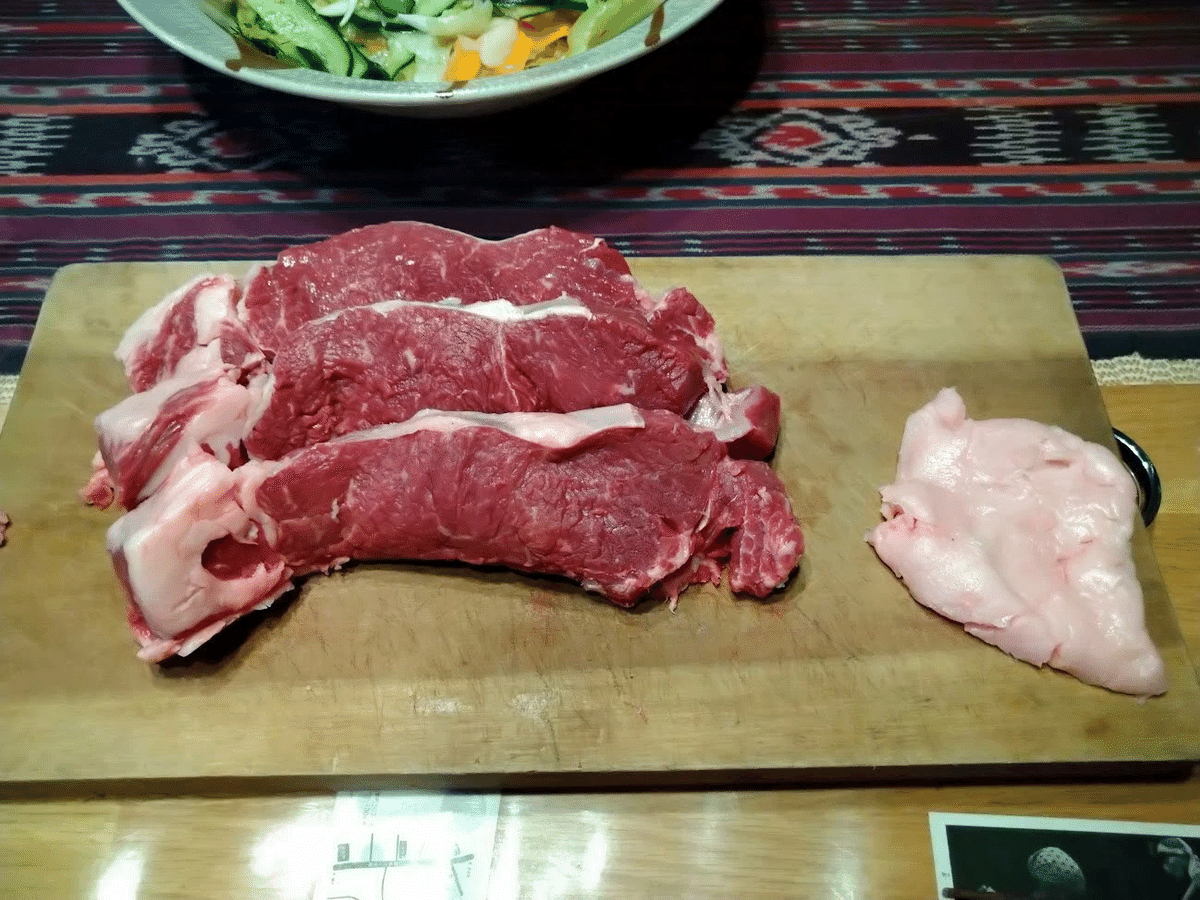
Life cycles through food.
We ingest the information that the creature possesses through eating.
We are in the cycle of life through food.
To eat is to live.
To connect Life to the Next Generation
That is why we need to think about what kind of information to put on our produce.
As producers, we need to pay close attention to what frequency we emit.
Morikawa Chikusan's meat will make you feel happy in your mouth the moment you eat it.
And you will be satisfied with a small amount.
We eat adult cows that have lived for 17 or 18 years and have fulfilled their duties.
At the end of the day, we take them from the pasture to the barn and feed them to their full bellies.
The sense of satisfaction and happiness is carried on the meat as information.
The information on the meat we eat becomes a part of our body and is utilized.

Grazing cattle have hair as good as a horse's.
And their bodies are well toned with muscles.


Everyone takes their daily meals with care.
The children, too, have stopped gorging themselves on food.
At Morikawa Livestock Breeding, chickens that are no longer able to lay eggs and have fulfilled their duties are strangled.
The children are also allowed to choose a live chicken to squeeze.
To live is to choose.
Nutrition education is the root of education.
In typical animal husbandry, cattle are confined to dark gauges to paralyze their satiety centers and feed them at a rate that would be impossible in nature.
They grow up to 400-500 kg at the age of four months.
Then, at the age of two and a half to three years, the cows are slaughtered for meat.
After eating a proper diet, Nahomi Morikawa says that her stomach began to ache when she went to an all-you-can-eat barbecue restaurant.
She said she could not digest and absorb the pain and suffering of the cows, which were deprived of the dignity of life and were stressed and anxious.
In fact, Japan is the only country in the world where cows are kept in gauges.
Only in Japan is beef with a "sashi" in it.
Beef from overseas is much firmer.
How do we feel and what kind of food do we eat on a daily basis?
"Thank you," "Itadakimasu," "Gochisosama."
These feelings are the basis of "living" and being "kept alive by the natural world.
I learned once again that these feelings are the basis of being "alive" and "being kept alive by the natural world."
Ms. Nahomi Morikawa
I learned that "You can tell what kind of food a person eats by looking at his or her diet.
Food is that important.
Eating is living. When you get down to it, you end up with,
What we end up with is the kind of soil we live on."
The condition of the soil and the condition of the human gut are often linked.
The same food may be planted, but if the soil is bad, it will not grow.
The same food cannot be digested if the intestines are bad.
These days, soil deterioration is a major problem everywhere.
If too much fertilizer is applied, plants stop putting down roots and the soil becomes hard.
I can't help but feel that people are deteriorating along with the soil.
To live in a rich, healthy, and happy world,
We must rethink about soil and food.
and food in order to live in a rich, healthy, and happy world.
